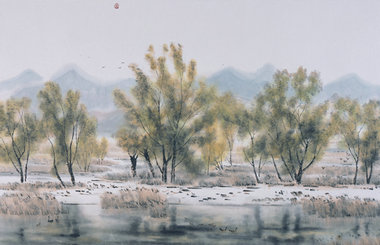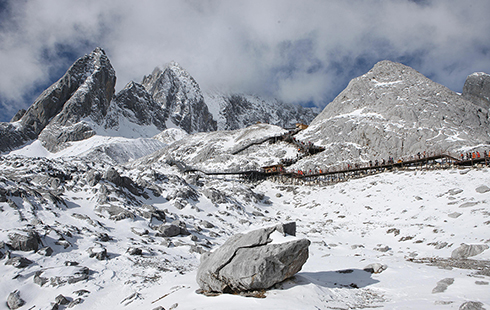Crossing Spain on an ancient pilgrimage route
By Giovanna Dell'orto In El Acebo, Spain Associated Press ( China Daily ) Updated: 2016-07-16 07:40:09Burgos to Carrion de Los Condes
Burgos is the kind of city where, after plodding for half a day through suburbs, you still take 1.5-hour walking tours of the 13th-century cathedral or the main monastery, then limber along the river promenade to restaurants specializing in lechazo, roasted lamb. Beyond is the emptiness of the meseta (plains). Its shades of green and gold are interrupted by jewels like Castrojeriz, Fromista and Carrion de los Condes, with intact Romanesque churches.
Astorga to O Cebreiro
The camino's longest climbs start just past the Gaudi-designed bishop's palace and buzzing main square of Astorga. Through fragrant brush and below snow-covered peaks, you clamber up hamlets like Rabanal, with its mesmerizing chanted vesper prayers, then down into vineyards around pretty, riverside Villafranca del Bierzo. From there it's uphill to O Cebreiro's thatched-roof stone houses and Galicia's moss-draped, cow-clogged paths.
After two more bucolic days, the last 100 kilometers are crowded with the "clean-shod", as we pilgrims hobbling on muddy boots called those who start here.
That takes nothing away, however, from arriving in Santiago, with its incense-filled cathedral covered with stern medieval statues and swirling Baroque cherubs standing tall among homes, monasteries and student pubs.
Before going back to email and schedules, there's a stairway to climb to embrace the statue of St. James at the cathedral's altar, and one last chance to hug fellow pilgrims.
Perhaps you exchange Facebook connections, perhaps nothing but a whispered "good luck," because you both know that the real tough "camino" starts now.
|
|
|
|
|
|
|
|

























 Raymond Zhou:
Raymond Zhou: Pauline D Loh:
Pauline D Loh: Hot Pot
Hot Pot Eco China
Eco China China Dream
China Dream China Face
China Face






